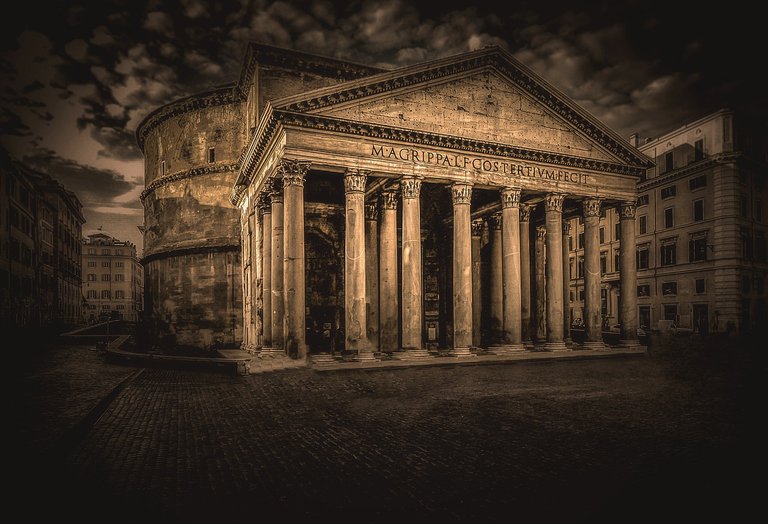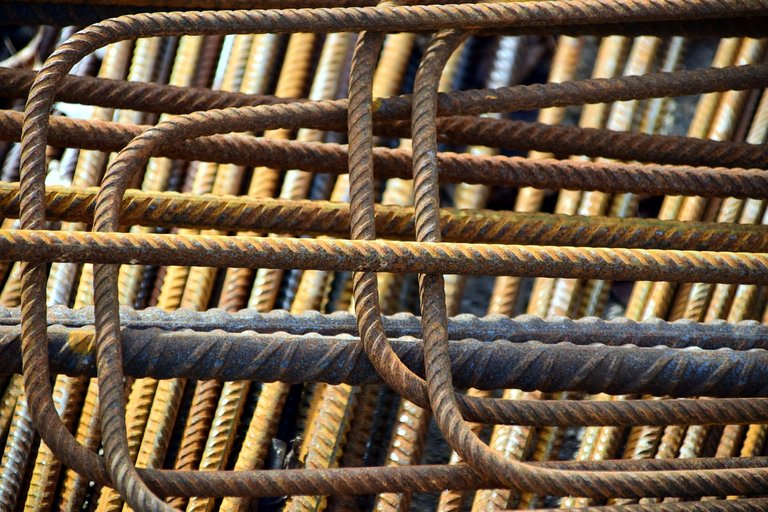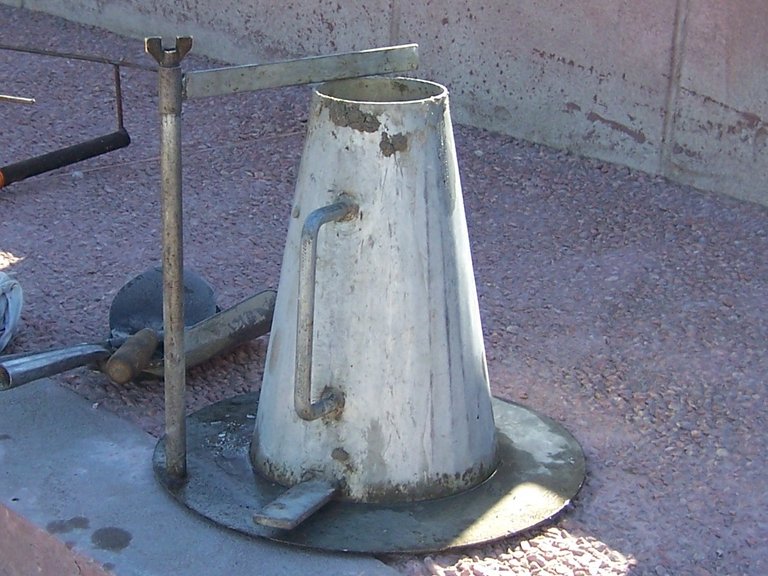
CCO Creative Commons Pantheon, Roma

Salve amici lettori,
ormai avrete capito anche voi quanto sia complesso riuscire a fare una sintesi esaustiva dell’evoluzione dei materiali dell’architettura ma io tengo duro e vado avanti! Riflettendo a posteriori sul mio ultimo articolo, mi sono reso conto che, se dal punto di vista dell’evoluzione storica di questo materiale posso ritenere conclusa la mia trattazione, da un punto di vista più generale mi mancava ancora qualcosa.
Così ho capito che, considerata anche la forte contemporaneità di questo materiale, per dare una giusta conclusione alla mia serie di articoli sul calcestruzzo è necessario fare un piccolo approfondimento di natura forse più tecnica che storico-architettonica, ma altrettanto importante per comprendere l’importanza che questo materiale ha assunto e assume ancora oggi nel mondo delle costruzioni.
Dunque nelle prossime righe cercherò di fornire, seppur in maniera semplice e sintetica, una serie di nozioni tecniche sulla produzione del cemento armato e sul suo impiego… buona lettura!

IL PROCESSO PRODUTTIVO DEL CEMENTO ARMATO
- La composizione
Come abbiamo visto nella fase introduttiva di questa serie di articoli dedicati a questo argomento, il calcestruzzo è un materiale composito ottenuto mescolando acqua, cemento Portland ed elementi lapidei più o meno fini, gli aggregati. La fase successiva alla miscelatura delle componenti è detta indurimento, caratterizzata dal lieve ritiro del calcestruzzo in conseguenza all’evaporazione dell’acqua contenuta nell’impasto. Il materiale così ottenuto si presenta polverulento e dalle capacità di legante.
Per quanto concerne il cemento, le materie prime vengono frantumate, miscelate nelle dovute proporzioni e infine immesse in un forno rotatorio ad alta temperatura (tra 1400 e 1650 °C). Il prodotto di questa cottura, che prende il nome di clinker, viene raffreddato e poi macinato finemente, ottenendo così il cemento che, con l’aggiunta di una piccola quantità di gesso come ritardante di presa, è pronto per essere confezionato.
Voglio ancora sottolineare l’importanza del rapporto acqua/cemento, da cui dipendono non solo le future caratteristiche del prodotto come la lavorabilità e la durabilità, ma anche la maturazione del conglomerato: un rapporto molto elevato può comportare l’eccessiva evaporazione in fase di presa con conseguente formazione di lesioni all’interno del manufatto, pregiudicandone così il comportamento futuro. Un rapporto ottimale, nella maggioranza delle applicazioni, deve essere inferiore a 0,6, ovvero l’acqua non deve superare il 60% del peso del cemento.
- Produzione e messa in opera
Per la produzione e la messa in opera del calcestruzzo sono tre i principali aspetti da argomentare: dosatura, getto e maturazione. La dosatura della miscela varia in funzione della destinazione d’uso del materiale: a seconda dell’impiego vanno ricercate determinate caratteristiche tecniche ed estetiche. Dunque la progettazione della miscela è di fondamentale importanza per il conferimento di requisiti quali la lavorabilità del cemento fresco o le proprietà fisiche e meccaniche del cemento indurito.
Per facilitare la fase successiva, ovvero il getto, spesso si incappa nel problema dell’eccesso di acqua nell’impasto, con tutte le potenziali problematiche che ne conseguono. Ancora una volta si rivela fondamentale un giusto dosaggio d’acqua. Un’altra prova cui può essere sottoposto il calcestruzzo fresco è la prova di consistenza, ottenuta con uno stampo troncoconico, detto Cono di Abrams, nel quale il composto viene costipato e di cui, successivamente viene misurato l’abbassamento una volta rimosso lo stampo. Questa prova è detta slump test.
La fase del getto consiste nel posare in opera il cemento nelle apposite casseforme. Questa operazione richiede una particolare attenzione perché il calcestruzzo fresco non ha una consistenza liquida ma si presenta come un impasto instabile e dunque, se sottoposto a vibrazioni continue o gettato da altezze eccessive può verificarsi il fenomeno della segregazione, ovvero la separazione delle parti grosse dalle fini, compromettendo le caratteristiche finali del materiale stesso. Per evitare questi scenari è importante, dunque, che il getto sia uniforme.
Altro aspetto rilevante in questa fase è la costipazione del composto all’interno delle casseforme, operazione volta all’eliminazione dell’aria e al riempimento dei vuoti e al completo avvolgimento dei ferri delle armature. Questo risultato si ottiene con una leggera vibrazione del conglomerato, con le dovute accortezze per i motivi appena citati, mediante mezzi meccanici.
Un fattore importante a seguito della posa in opera è la maturazione del calcestruzzo. In questa fase avvengono due processi: presa e indurimento. Quest’ultimo si ritiene completo dopo circa 28 giorni e la successiva operazione è quella del disarmo, ovvero l’asporto delle casseforme, che ovviamente deve avvenire senza causare danni al calcestruzzo o alle casseforme stesse e, per questa ragione, le superfici a contatto col calcestruzzo vengono rivestite con un composto disarmante che impedisce l’adesione tra calcestruzzo e cassaforma.
L’armatura metallica, voglio ricordare, ha lo scopo di sopperire alla scarsa resistenza a trazione del calcestruzzo e la loro collaborazione è possibile grazie al simile valore del coefficiente di dilatazione termica nonché all’aderenza fra i due materiali. Il posizionamento delle armature ricade dunque esattamente nelle zone del calcestruzzo soggette a trazione, questo è il principio base della tecnica del cemento armato.
Diversi fattori possono influire sulla quantità e la disposizione delle armature, come lo spazio a disposizione nelle casseforme o lo spessore del copriferro, o ancora, la spaziatura prevista. Un particolare tipo di armatura è la rete elettrosaldata, che presenta l’indubbio vantaggio della rapidità della messa in opera e la conseguente economia in termini di mano d’opera.
CEMENTO ARMATO PRECOMPRESSO
Una ulteriore innovazione nel campo del cemento armato è la precompressione dello stesso. Si definisce presollecitata una struttura nella quale viene artificialmente creato uno stato di tensione interno che modifica le caratteristiche meccaniche del materiale. Nel calcestruzzo armato precompresso, infatti, la presollecitazione, ovvero la precompressione prodotta dalle armature metalliche poste in tensione, gli conferisce una maggiore resistenza a trazione.
I sistemi di precompressione sono suddivisibili in due categorie:
-precompressione ad armatura pre-tesa, cioè quando si sottopone a trazione l’armatura metallica prima del getto del calcestruzzo. Un sistema che, per ragioni economiche e di facilità di realizzazione, trova maggiore impiego nel caso di elementi prefabbricati;
-precompressione ad armatura post-tesa, come il nome lascia intendere, quando la precompressione viene effettuata quasi esclusivamente a piè d’opera mediante un martinetto idraulico posizionato ad un estremo del cavo metallico che, una volta raggiunta la trazione desiderata, viene ancorato al calcestruzzo.
Si può migliorare ulteriormente l’efficienza della tecnica del calcestruzzo armato precompresso se si fa in modo che l’armatura segua l’andamento delle forze di trazione.
CEMENTO ARMATO PREFABBRICATO
Concludo la mia trattazione con un cenno ad un’altra tecnologia riguardante il calcestruzzo, ossia il cemento armato prefabbricato. Gli elementi prefabbricati in calcestruzzo sono le lastre per solai, le travi, i pilastri e pannelli per muri portanti. Questi elementi vengono prodotti presso stabilimenti industriali per poi essere portati in cantiere per la posa in opera.
I potenziali vantaggi di questa tecnica costruttiva sono diversi: dalla meccanizzazione del processo, che peraltro si svolge in luoghi chiusi e quindi a riparo da possibili condizioni meteorologiche avverse, al maggiore controllo della qualità dei materiali, fino al risparmio economico sulle casseforme, che possono essere di diversi materiali e riutilizzati centinaia di volte. Altro importante vantaggio rappresentato dalle casseforme è che sono predisposte per elementi precompressi, e la loro maggiore efficienza strutturale comporta maggiori luci libere e minori altezze per elementi come le travi.
Anche questa tecnologia non è però esente da limiti e aspetti meno positivi. Nella scelta tra elementi prefabbricati e il getto in opera, infatti, bisogna tener conto del possibile svantaggio costituito dalle difficoltà di trasporto e posa in opera degli elementi prefabbricati che, nonostante siano più leggeri rispetto a quelli gettati in opera, si rivelano troppo ingombranti per i mezzi di trasporto e di sollevamento che si hanno a disposizione.

Bene amici lettori, come abbiamo visto, il calcestruzzo è un materiale che, forse più di tutti, ha saputo rinnovarsi e trasformarsi nel corso dei secoli adattandosi alle esigenze e tecnologie di ogni epoca e pertanto è sicuramente uno dei materiali dell’architettura più importanti e usati della storia. E anche col calcestruzzo siamo giunti al capolinea, ovviamente mi auguro abbiate gradito.
Detto questo ho davvero concluso, vi abbraccio tutti!
L'Ego dice: "Quando ogni cosa andrà a posto troverò la pace".
Lo Spirito dice: "Trova la pace e ogni cosa andrà a posto".

CCO Creative Commons Ferri per le armature

Hello reader friends,
now you will have understood how complex it is to be able to make a comprehensive summary of the evolution of the materials of architecture but I hold on and go forward! Reflecting later on my last article, I realized that, if from the point of view of the historical evolution of this material I can conclude my discussion, from a more general point of view I still lacked something.
So I understood that, also considering the strong contemporaneity of this material, to give a correct conclusion to my series of articles on concrete it is necessary to do a little study of perhaps more technical than historical-architectural nature, but equally important to understand the importance that this material has assumed and still assumes today in the construction world.
So in the next lines I will try to provide, albeit in a simple and concise manner, a series of technical notions on the production of reinforced concrete and its use... good reading!

THE PRODUCTION PROCESS OF ARMED CEMENT
- The composition
As we saw in the introductory phase of this series of articles dedicated to this topic, concrete is a composite material obtained by mixing water, Portland cement and more or less fine stone elements, aggregates. The phase following the mixing of the components is called hardening, characterized by the slight shrinkage of the concrete as a consequence of the evaporation of the water contained in the mixture. The material thus obtained is powdery and binder.
As for cement, the raw materials are crushed, mixed in the proper proportions and finally placed in a high temperature rotary kiln (between 1400 and 1650 ° C). The product of this cooking, which takes the name of clinker, is cooled and then finely ground, thus obtaining the cement which, with the addition of a small quantity of gypsum as a setting retarder, is ready for be packaged.
I would like to underline the importance of the water/cement ratio, on which not only future characteristics of the product depend, such as workability and durability, but also the maturation of the conglomerate: a very high ratio can result in excessive evaporation during the setting phase with consequent formation of lesions inside the manufactured article, thus jeopardizing its future behavior. An optimal ratio, in most applications, must be less than 0.6, or the water must not exceed 60% of the weight of the cement.
- Production and implementation
For the production and installation of concrete there are three main aspects to be argued: dosage, jet and maturation. The dosage of the mixture varies according to the intended use of the material: depending on the use, certain technical and aesthetic characteristics must be sought. Therefore the design of the mixture is of fundamental importance for the conferment of requirements such as the workability of the fresh cement or the physical and mechanical properties of the hardened cement.
To facilitate the next phase, that is the casting, we often run into the problem of excess water in the mixture, with all the potential problems that follow. Once again, the right amount of water is essential. Another test which the fresh concrete can be subjected to is the consistency test, obtained with a truncated cone mold, called Cone of Abrams, in which the compound is compacted and of which, subsequently the lowering is measured once the mold has been removed. This test is called slump test.
The phase of the jet consists in laying the cement in place in the special formwork. This operation requires particular attention because the fresh concrete does not have a liquid consistency but is an unstable mix and therefore, if subjected to continuous vibrations or thrown from excessive heights, the phenomenon of segregation, or the separation of the big parts from the ends, compromising the final characteristics of the material itself. To avoid these scenarios it is important, therefore, that the jet is uniform.
Another important aspect in this phase is the constipation of the compound inside the formwork, an operation aimed at eliminating the air and filling the voids and the complete wrapping of the reinforcing rods. This result is obtained by a slight vibration of the conglomerate, with the due care for the reasons just mentioned, by mechanical means.
An important factor following the installation is the maturation of the concrete. In this phase two processes take place: setting and hardening. The latter is considered complete after about 28 days and the subsequent operation is that of the disarmament, ie the removal of the formwork, which obviously must take place without causing damage to the concrete or to the formworks and, for this reason , the surfaces in contact with the concrete are coated with a disarming compound that prevents adhesion between concrete and formwork.
The metal reinforcement, I want to remember, is designed to meet the low tensile strength of concrete and their collaboration is possible thanks to the similar value of the thermal expansion coefficient and the adhesion between the two materials. Therefore, the positioning of the reinforcement falls exactly in the areas of concrete subjected to traction, this is the basic principle of the reinforced concrete technique.
Several factors can affect the amount and arrangement of reinforcements, such as the space available in the formwork or the thickness of the concrete cover, or the expected spacing. A particular type of reinforcement is the electro-welded mesh, which has the undoubted advantage of the rapidity of the installation and the consequent economy in terms of labor.
PREVIOUS ARMED CONCRETE
A further innovation in the field of reinforced concrete is the pre-compression of the same. A pre-stressed definition is defined as a structure in which a state of internal tension is artificially created which modifies the mechanical characteristics of the material. In pre-stressed reinforced concrete, in fact, the pre-stress, or the prestressing produced by the metal reinforcements placed under tension, gives it greater tensile strength.
The pre-compression systems can be subdivided into two categories:
-pre-tensioned prestressing, or when the metal reinforcement is subjected to traction prior to casting of the concrete. A system that, for economic reasons and ease of implementation, is more used in the case of prefabricated elements;
-post-tensioned prestressing, as the name suggests, when the prestress is performed almost exclusively at the foot of the work by means of a hydraulic jack positioned at one end of the metal cable which, once the desired traction is achieved , is anchored to the concrete.
The efficiency of the prestressed reinforced concrete technique can be further improved if the reinforcement is followed by the traction forces.
PREFABRICATED ARMED CONCRETE
I conclude my discussion with a nod to another technology concerning concrete, or prefabricated reinforced concrete. The prefabricated concrete elements are slabs for floors, beams, pillars and panels for load-bearing walls. These elements are produced in industrial plants and then brought to the site for installation.
The potential advantages of this construction technique are different: from the mechanization of the process, which, moreover, takes place in closed places and therefore away from possible adverse weather conditions, greater control of the quality of the materials, up to the economic savings on the formworks, which can be of different materials and reused hundreds of times. Another important advantage represented by the formworks is that they are designed for prestressed elements, and their greater structural efficiency leads to greater free lights and lower heights for elements such as beams.
However, even this technology is not exempt from limits and less positive aspects. In the choice between prefabricated elements and the cast in place, in fact, we must take into account the possible disadvantage of transport and installation difficulties of prefabricated elements that, despite being lighter than those cast in place, are too bulky for the means of transport and lifting that are available.

Well, my readers, as we have seen, concrete is a material that, perhaps most of all, has been able to renew itself and transform itself over the centuries adapting itself to the needs and technologies of every age and is therefore certainly one of the most important architectural materials. used in history. And even with the concrete we have reached the end, of course I hope you enjoyed.
That said I really concluded, I embrace you all!
The ego says: "When everything goes right I will find peace"
The Spirit says: "Find peace and everything will fall into place"

CCO Creative Commons Cono di Abrams
Le mie fonti…
A questo proposito devo fare una piccolissima premessa: la principale fonte per la stesura, non solo di questo, ma di tutti gli articoli che ho scritto finora sull’architettura sono i miei preziosi appunti delle lezioni nonché dei seminari che ho seguito sempre in ambito universitario. Ovviamente per completezza ho usato anche la rete per avere maggiori dettagli su quanto già in mio possesso. Inoltre, come ho fatto anche da studente universitario, mi sono aiutato con vecchi testi scolastici (ho il diploma di geometra qualora non l’avessi mai detto!) ma anche con testi universitari.
Quindi ricapitolando le mie principali fonti sono:
-Appunti delle lezioni e dei seminari universitari
-Edward Allen , I fondamenti del costruire: i materiali, le tecniche, i metodi, McGraw-Hill
-Lorenzo Bartolini Salimberi, Lineamenti di storia dell’architettura , Sovera
-La collana di libri di G.K.Koening-F.Brunetti, Corso di Tecnologia delle Costruzioni , Le Monnier
Nice.
Follow me :)
Tq
Hi! Of course i follow you, thank you! ;)